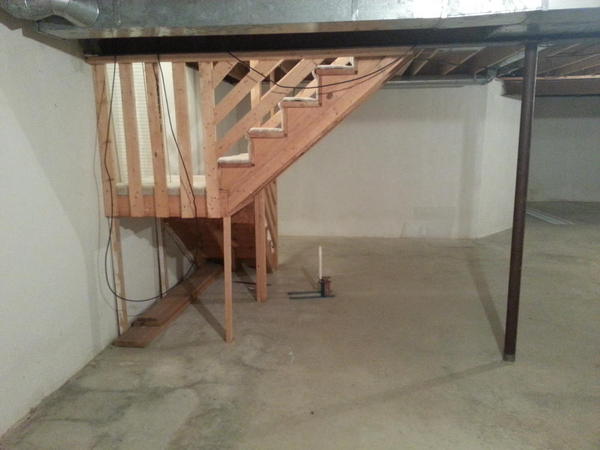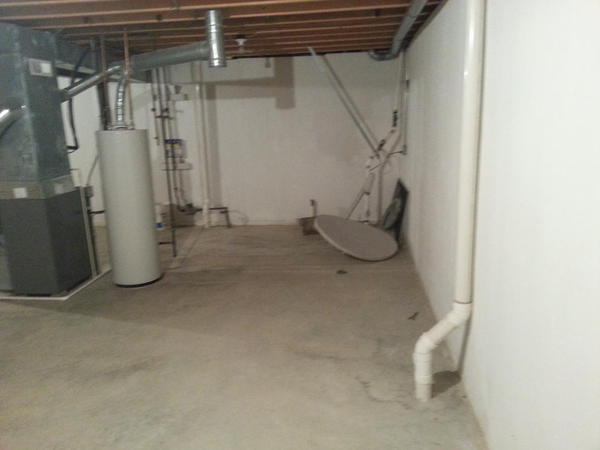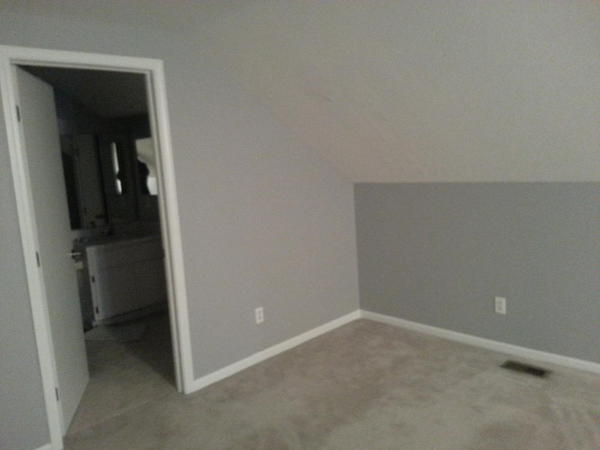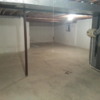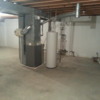Originally Posted by vonhammer87:
Hmm, looks pretty good for a quick sketch. Didn't really think that i could get a 60" min radius in. Only problem I for see would be area by the stairs. Depending on what I do my bench work at (thinking 42") there might be a problem with clearances, the base of the stairs faces wall E.
But other than that, it does have potential. Although you mention this could be operated as point-to-point, how would that be achieved?
Well, a 60 inch radius would be 10 feet across, so I just used the "D" wall as the base with it's 13 foot width and went with it. If I were to refine the plan I would vary the radius' to enhance the fit and form of the layout. For a GP9 and 40/50ft cars, I would be comfortable tightening the radius as low as 45in in yards and industries!
The stairs! If it were me...! The good news is that they don't look to be part of the supporting structure of the house. I would widen the middle landing, and rotate the bottom 5 steps to parallel with the top steps. Build a half wall on the side of the new landing that over looks the great scene in the corner of "E" and "C". If the track height is designed right the track would pass across the landing on a minimum width shelf (with protection).
To operate point to point... Use the end of the yard next to the furnace as the "end of track" and the siding on the other side of the layout as the turn back point (run around). I would also look for a way to drop a second track down grade at the end of this run around that would pass hidden behind and eventually under the yard to serve as staging. That way operations would be from between yard and staging or from staging to yard and back.
I didn't mention this earlier about the "closet" for the utilities. I would use sliding doors or folding doors on the "A" and "B" sides in order to provide that sufficient "access" needed for maintenance. Basically moving walls! This allow one to reduce the clearance need for the appliances to a minimum. This would need some thought and planning to account for the orientation of the appliances to ensure everything works and fits!
Last but not least! Layout height! This is a dynamic situation as there are several hard facts (celling and stairs measurements), variables (staging clearances) and personal preferences (comfortable or familiar viewing positions). My personal thinking is that the visual is always the first consideration, after all this is a mostly visual hobby. (I have never meet a blind modeler!) With that in mind, I would look for a track height somewhere with in a range between 12 inches below and dead even of my eye balls! This gives the most natural vision vantage point similar to the real world. I'm 5'9" and my eyes are about slightly above 5ft off the floor. That would set my base at 48 inches. Next I would factor in depth of the model scenes. With an around the wall layout, most of the scenes will be fairly shallow, not more than 24 inch deep. At 48in, I can reach to the back of a 24in deep scene, your mileage may vary. Lastly I would consider the fixed things like that stair case landing that needs crossed. would my 48in clear it? Also, what about the ceiling? Is there enough "headroom" above the finished scene (remember to consider the height of buildings and, trees and mountains!) to allow for lighting? I've seen some unique solutions to all of these, such as raised floors and scene selections (looking up at a bridge from water level).
Just some ideas! Take a look at my friends layout. He has addressed some of this too. Visit aorailroad.com This is an O scale 2 rail layout designed for operations.






